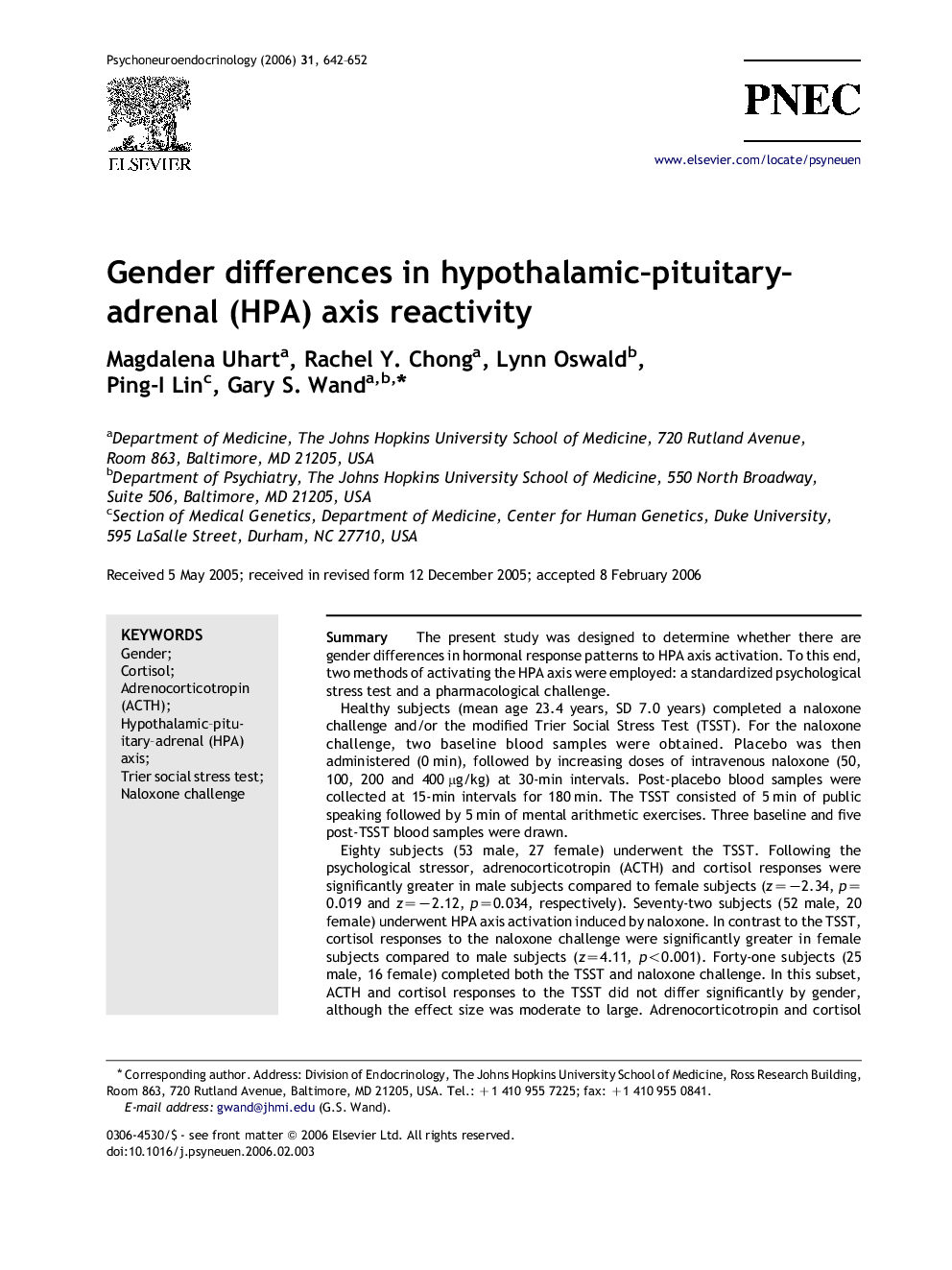| کد مقاله | کد نشریه | سال انتشار | مقاله انگلیسی | نسخه تمام متن |
|---|---|---|---|---|
| 336689 | 547186 | 2006 | 11 صفحه PDF | دانلود رایگان |

SummaryThe present study was designed to determine whether there are gender differences in hormonal response patterns to HPA axis activation. To this end, two methods of activating the HPA axis were employed: a standardized psychological stress test and a pharmacological challenge.Healthy subjects (mean age 23.4 years, SD 7.0 years) completed a naloxone challenge and/or the modified Trier Social Stress Test (TSST). For the naloxone challenge, two baseline blood samples were obtained. Placebo was then administered (0 min), followed by increasing doses of intravenous naloxone (50, 100, 200 and 400 μg/kg) at 30-min intervals. Post-placebo blood samples were collected at 15-min intervals for 180 min. The TSST consisted of 5 min of public speaking followed by 5 min of mental arithmetic exercises. Three baseline and five post-TSST blood samples were drawn.Eighty subjects (53 male, 27 female) underwent the TSST. Following the psychological stressor, adrenocorticotropin (ACTH) and cortisol responses were significantly greater in male subjects compared to female subjects (z=−2.34, p=0.019 and z=−2.12, p=0.034, respectively). Seventy-two subjects (52 male, 20 female) underwent HPA axis activation induced by naloxone. In contrast to the TSST, cortisol responses to the naloxone challenge were significantly greater in female subjects compared to male subjects (z=4.11, p<0.001). Forty-one subjects (25 male, 16 female) completed both the TSST and naloxone challenge. In this subset, ACTH and cortisol responses to the TSST did not differ significantly by gender, although the effect size was moderate to large. Adrenocorticotropin and cortisol responses to the naloxone challenge were significantly greater in female subjects compared to male subjects (z=2.29, p=0.022 and z=4.34, p<0.001, respectively).In summary, male subjects had greater HPA axis responses to a psychological stressor than female subjects, and females had greater hormonal reactivity than males to pharmacological stimulation with naloxone. Such differences are of interest as potential contributors to gender differences in health risks.
Journal: Psychoneuroendocrinology - Volume 31, Issue 5, June 2006, Pages 642–652